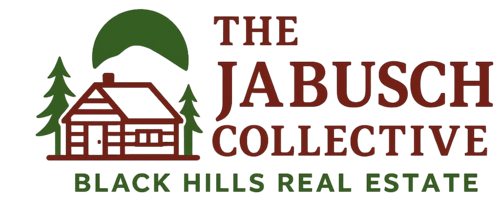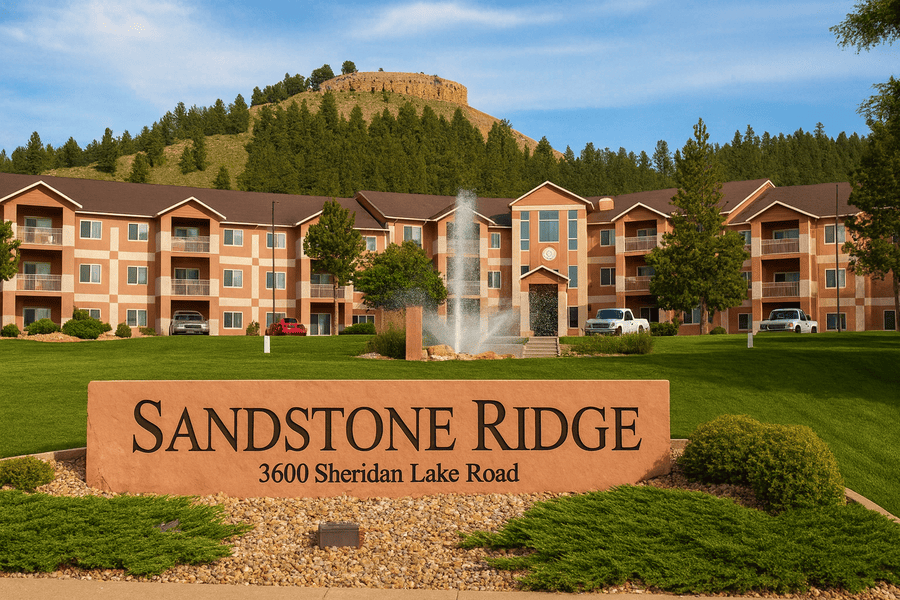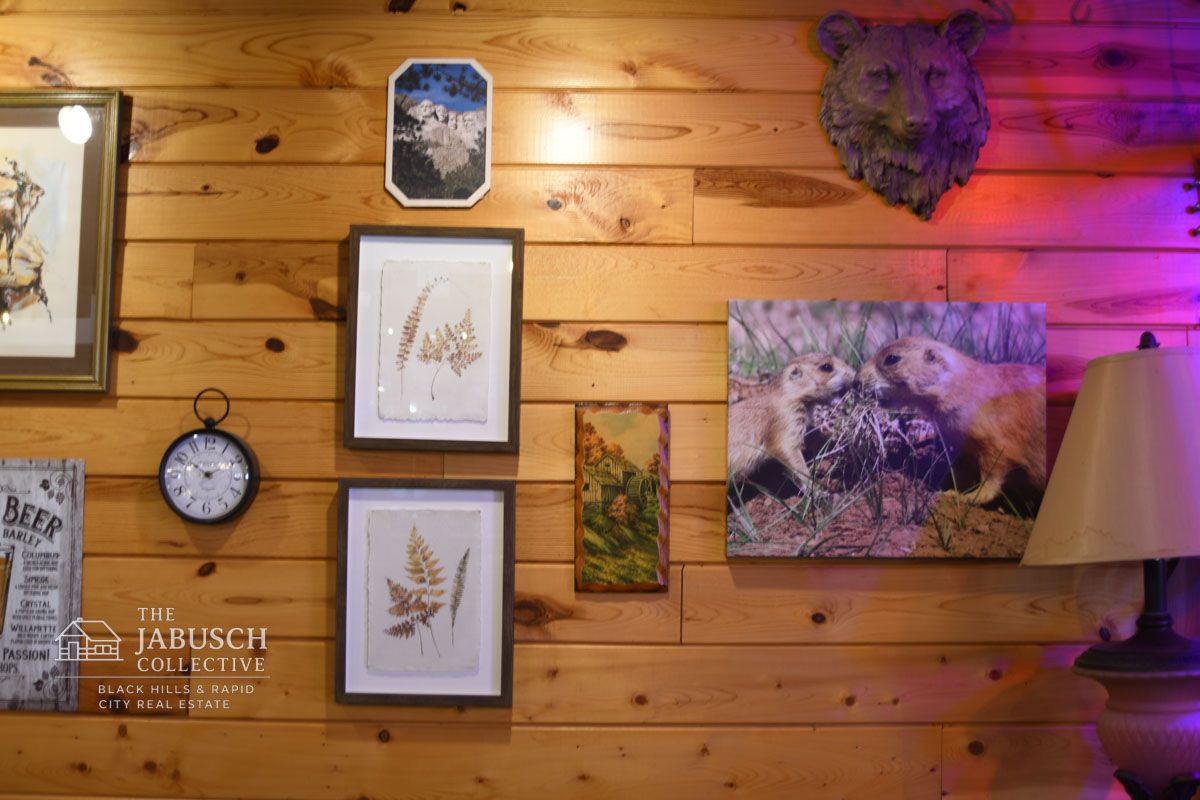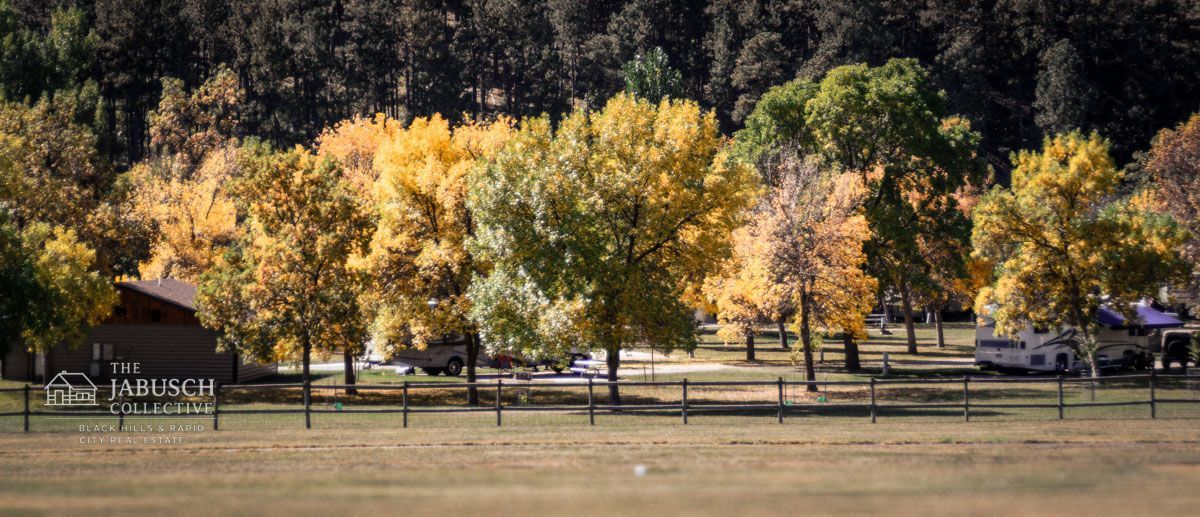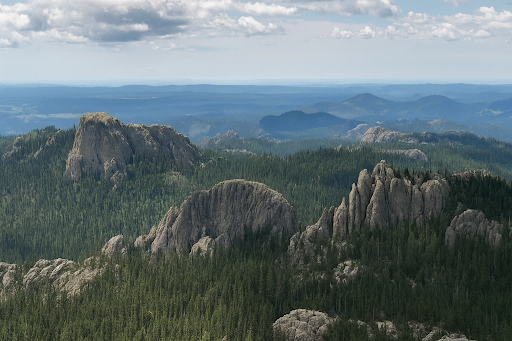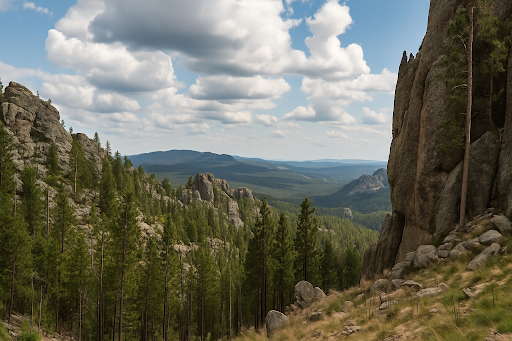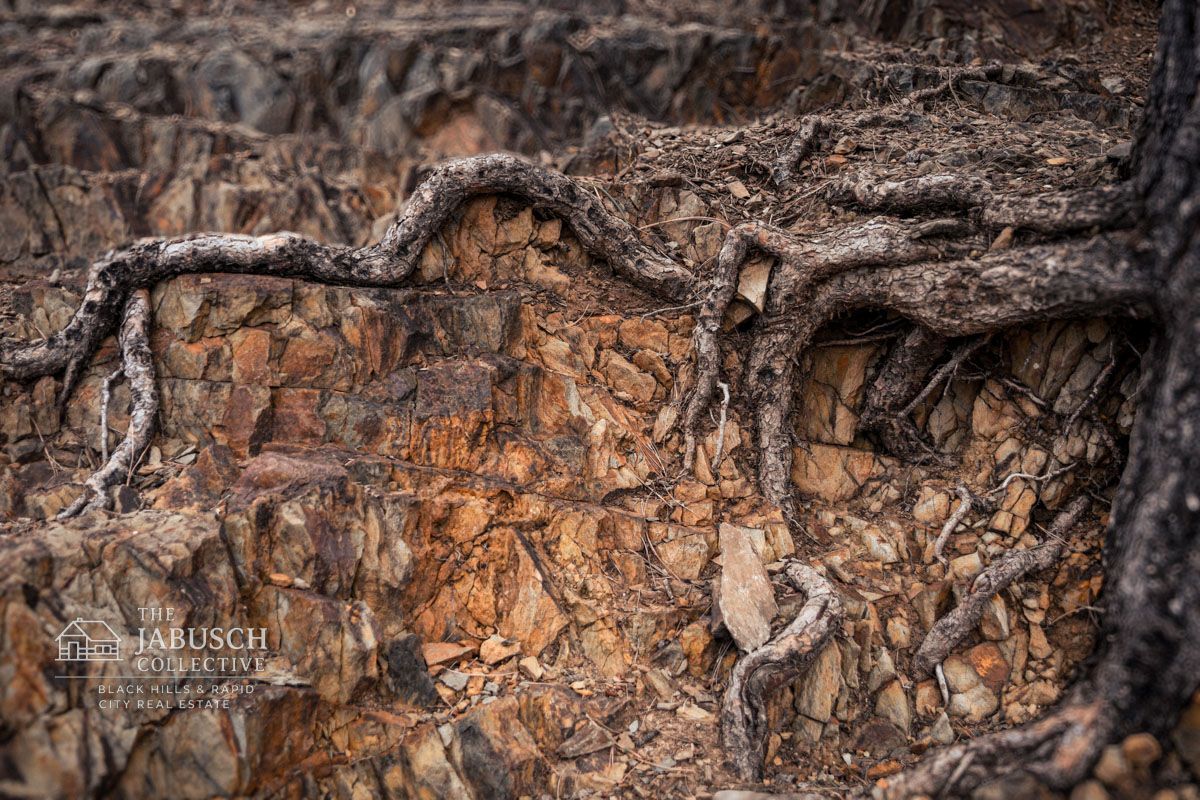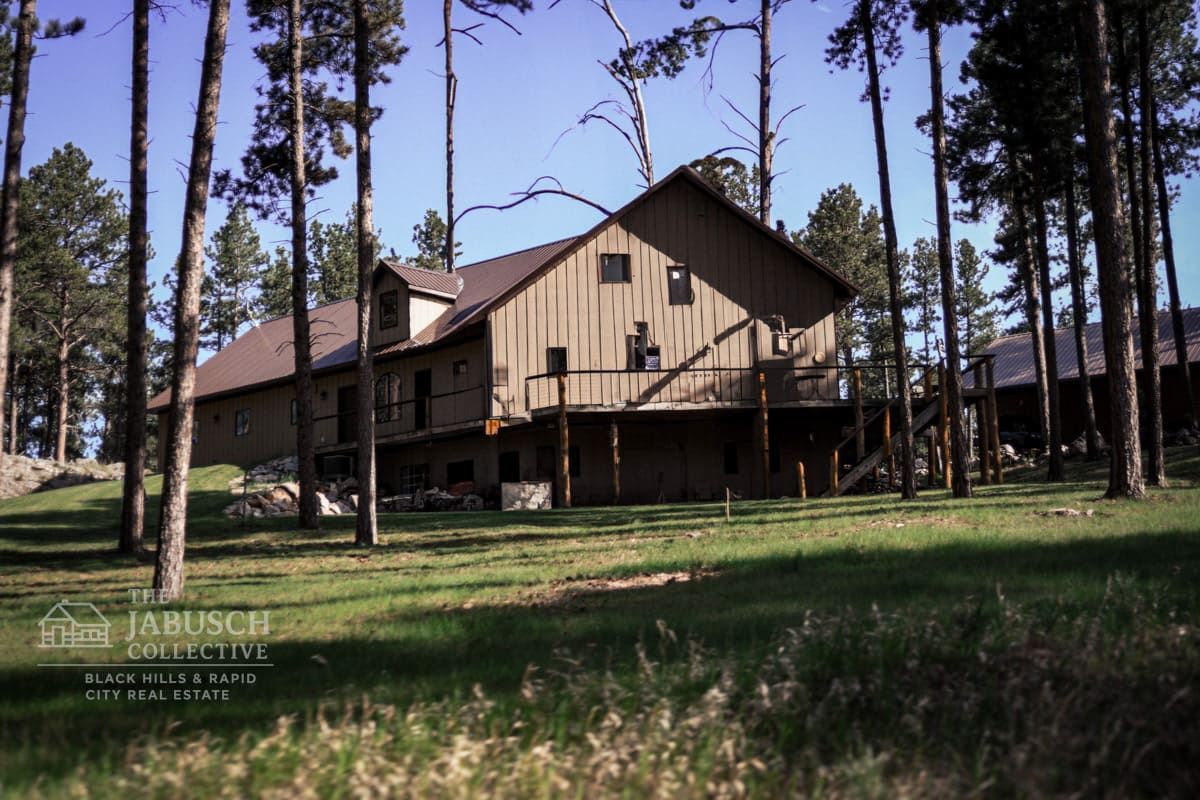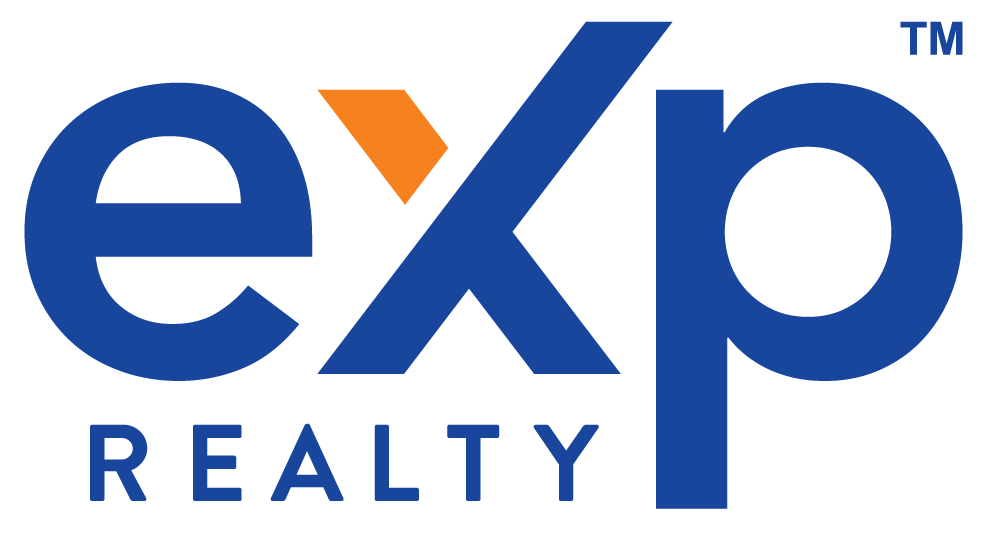What Makes Land More Valuable in the Black Hills?
Not all acreage is created equal. Two parcels may both measure 20 acres, but one could be worth significantly more than the other. Why? Because land value isn’t just about size—it’s about
how usable and accessible that land really is.
The most valuable parcels usually have a few things in common:
- Year-round access: Land on a paved or well-maintained gravel road will always hold more value than property that requires four-wheel drive to reach. If you need to plow through mud or snow every time you visit, buyers down the line will hesitate, too.
- Proximity to towns and services:
Parcels closer to Rapid City, Custer, or Spearfish often sell for more because of convenience. Even 15 extra minutes of driving every day can add up in lifestyle costs.
- Build-ready terrain: Flat or gently rolling land makes building far easier (and cheaper) than a steep, rocky slope.
On the flip side, land that’s
landlocked (no legal access road) or located in a
floodplain may seem like a deal at first, but hidden costs and restrictions can eat into your investment. Insurance can skyrocket in flood-prone areas, and landlocked property may require negotiating with neighbors to reach it.
💡
The Jabusch rule: in the Black Hills, usability always beats raw acreage. A smaller parcel with easy access and a good building site can be worth far more than a larger, harder-to-use one.
Black Hills Land Features That Hold Value Over Time
When we help clients shop for land, one of the first questions they ask is:
“Will this hold its value?” It’s a smart question, because land isn’t just about today—it’s about the security and potential it offers down the road.
In our experience, certain features consistently make a property more desirable over time:
- Water sources—like live creeks, natural springs, or reliable wells—are among the strongest indicators of lasting worth.
- Healthy timber or open pastureland supports a variety of uses, from recreation to livestock.
- Scenery and adjacency: Parcels with mountain views or borders on public land often appreciate more quickly because they’re rare and harder to find.
Mineral rights are another layer that buyers don’t always think about. I’ve seen parcels where the surface looked ideal, but the lack of mineral rights made the deal less attractive to future buyers. Even if you don’t plan to mine or lease, having rights intact often helps preserve long-term value.
💡
Scarcity drives value. The rarer the feature—whether it’s water, views, or resource rights—the more substantial your investment will be.
Black Hills Land Value Indicators Buyers Should Watch For
When we
walk the land with buyers in the Black Hills, we encourage them to look past the acreage number on the listing. Ten acres of steep granite cliffs might sound impressive, but it won’t serve you the same way as ten acres with a sunny meadow, a building site, and reasonable access.
Here are some value indicators we always point out:
- Flat or gently sloping building sites: Avoids heavy excavation costs.
- Existing access or driveways: Even a simple cut-in road can save thousands.
- Proximity to utilities: Power poles along the road or a rural water line nearby are big green flags. Extending utilities across long distances is one of the priciest surprises land buyers face.
- Sun exposure: South-facing slopes soak up more sunlight—better gardening, easier solar, less snowpack.
- Healthy natural features: Year-round creeks, established pines, or open pasture are not just beautiful—they’re practical.
I always recommend pulling a
floodplain map, such as FEMA, before getting too attached to a parcel. A property can look perfect until you realize parts of it sit in a high-risk flood zone.
💡
When in doubt, ask yourself: would the next buyer down the line see these same features as assets? If yes, you’re probably on solid ground—literally.
Choosing Land Based on Usage Goals
One of the first conversations I have with land buyers is about
intended use. Owning acreage means different things to different people, and the land that’s perfect for a homesteader may be a headache for someone who wants a cabin getaway.
- Homesteads & hobby farms: Look for
fertile soil, reliable water sources, and open ground for animals or gardens. Flat pastureland may not look as romantic as a mountain ridge, but it’s far more practical when you’re feeding goats or tilling soil.
- Hunting & recreation: Wooded draws, varied terrain, and wildlife corridors matter more than meadows. I’ve walked parcels where game sign was everywhere—and those spots hold their value for sportsmen.
- Building a home or
cabin: Focus on
build-ready sites, easy road access, and nearby utilities. It may not feel glamorous to ask about septic percolation tests or power line proximity, but those questions make all the difference.
- Long-term investment: Target acreage near
growth corridors or with unique features—views, adjacency to public land, or intact mineral rights. These are the parcels buyers fight over years down the road.
💡
We always tell clients: start with your lifestyle dream, and we’ll match you to the land that makes it real.
Why Access & Road Frontage Add Value
We’ve seen it time and again: a buyer falls in love with a piece of land, only to realize later that reaching it is half the battle. Access is one of the biggest—and most overlooked—factors in land value here in the Black Hills.
- Parcels that sit along a
paved or well-maintained county road carry a premium.
- Landlocked properties (no legal road access) are frustrating to own and require negotiating an easement with neighbors, which isn’t always simple.
- Even when a road exists, its
condition matters. A rutted seasonal two-track that washes out in spring or drifts shut in winter can make year-round living difficult.
I always advise buyers to visit a parcel in more than one season if possible—it’s the best way to get a feel for whether access will be dependable.
💡
Our rule of thumb: if you can’t reliably drive to your land in January or April, expect that future buyers will see it the same way.
Utilities & Infrastructure: What You’re Really Paying For
Utilities are one of the most significant make-or-break factors when it comes to land in the Black Hills. We’ve walked plenty of gorgeous parcels with buyers that looked perfect—until we started calculating what it would cost to get water, power, or internet on site.
- Water: Some properties connect to rural water systems. Others require drilling a private well, which can range from $10,000 to over $30,000
depending on depth and geology. Testing is essential—flow rate and water quality matter just as much as drilling costs. In Pennington County, the average well depth is often 250–400 feet, which means drilling costs can run well into the tens of thousands.
- Septic systems: Outside city limits, you’ll need one. The soil must pass a
percolation test to ensure it can absorb wastewater. If it fails, you may need an engineered system—or find the land isn’t buildable at all.
- Power: If a utility pole is nearby, the hookup is straightforward. If not, extending lines across rugged ground can cost thousands per mile. Some buyers consider solar or propane, but those come with setup costs, too.
- Internet: Fiber is expanding
across the Hills, but not everywhere yet. For remote workers, this is often a dealbreaker.
💡
From what we’ve seen, parcels with utilities nearby almost always hold their value better—and they’re much easier to turn into a home, not just a piece of land.
Psst! We tell you the secret to finding land that already includes utilities (and therefore saves you a headache)
in our Homesteading Blog!
Topography & Usable Land in the Hills
One of the biggest misconceptions we run into is the idea that “acres are acres.” On paper, 40 acres might sound like a dream—but if most of it is steep canyon wall or solid granite, you may only be able to use a fraction of it.
When we walk the land with buyers, we focus on
usable ground:
- Flat meadows and gently sloping benches usually make the best building sites.
- Steep terrain adds beauty but limits what you can actually do with the land.
- Dense pine forests add privacy but also carry
fire risk and may require thinning.
- Open pasture is excellent for grazing but lacks cover for hunting or shade for homesites.
We also keep an eye out for
rock outcroppings and soil quality. They affect both building and agriculture. And don’t forget
floodplains—scenic, yes, but costly for insurance and limited for building.
💡
The takeaway: buy land for how much of it you can really use—not just how much shows up on a survey.
Restrictions, Zoning & HOAs in the Black Hills
One of the most important parts of buying land is understanding what you can and can’t do with it. We’ve seen buyers get excited about a parcel only to find out later that the zoning or covenants didn’t line up with their plans.
- Zoning: Agricultural, residential, or commercial—each carries limits. If you plan to run animals, park an RV, or build multiple dwellings, zoning will be a deciding factor.
- Covenants & HOAs: Some parcels have rules about home styles, animals, or fencing. While these protect property values, they can also feel restrictive.
- Easements: Legal rights that give others access to part of your land (roads, utilities, pipelines). Not always a deal-breaker, but essential to understand.
💡
Our rule of thumb: make sure the land’s restrictions fit your vision. The wrong rules can turn a “dream property” into a compromise.
Black Hills Land as Lifestyle & Long-Term Investment
When clients ask us whether buying land is “worth it,” we usually flip the question back:
“What do you want this land to mean in your life?” Because the value of acreage isn’t just financial—it’s deeply tied to how it supports your lifestyle today and in the years to come.
For some buyers, land is about
freedom and privacy. For others, it’s about
recreation—hunting, hiking, or camping on their own property. And for many, acreage is a
hedge against uncertainty, a way to secure resources and space for the future.
From an investment standpoint, parcels with
rare features—mountain views, adjacency to public lands, water sources, or intact mineral rights—almost always perform best long-term. We’ve seen these properties hold value even when the broader market cools, simply because there’s only so much of it available.
💡
The best land serves your lifestyle today and carries unique features that make it valuable tomorrow.
The Bottom Line
Buying land in the Black Hills is about more than counting acres—it’s about understanding what makes those acres valuable, usable, and right for your vision. We’ve walked properties that looked perfect on paper but came with hidden challenges, and we’ve seen modest parcels turn out to be incredible investments because they had the right mix of access, water, and usability.
The truth is, every parcel tells its own story. Some will fit beautifully with your goals, while others may look appealing online but fall short when you stand on the ground. That’s where having a local guide makes the difference. We know the questions to ask, the maps to check, and the features to watch for—because we’ve helped buyers navigate these decisions time and again.
If you’re considering acreage, don’t just buy dirt—buy the lifestyle and security that come with the right land.
Schedule a Land Buyer Consultation today, and let’s walk through what you want, what to look for, and what it will really cost to make it yours. Together, we’ll find land that serves you today and holds value tomorrow.
Frequently Asked Questions About Buying Land in the Black Hills
How much does land cost per acre in the Black Hills?
It depends heavily on location and features. Parcels closer to Rapid City or Spearfish, with access and utilities, can fetch significantly more per acre than remote, rugged land without improvements. Generally, usability and proximity drive price more than size alone.
Can I finance land, or do I need cash?
Both are possible. Some banks and local lenders offer land loans, but terms are often shorter and require higher down payments than home loans. We usually recommend talking to a Black Hills–based lender who understands rural property.
Do all parcels come with mineral rights?
Not always. Many properties in the Black Hills have mineral rights severed decades ago. That doesn’t mean the land isn’t valuable, but it’s essential to know whether you own surface rights only or both surface and subsurface rights.
What should I budget for utilities?
If rural water and power are nearby, hookup costs may be modest. But drilling a well can run $10,000–$30,000+, and extending electric lines across rough terrain can cost thousands per mile. Always ask about utility proximity before making an offer.
Can I build anywhere on my land?
Not necessarily. Floodplains, zoning rules, soil limitations (for septic), and covenants can all restrict where and what you can build. That’s why site visits and soil/percolation tests are so important before closing.
Is buying land in the Black Hills a good investment?
In our experience, yes—especially parcels with rare features like mountain views, adjacency to public lands, or reliable water sources. These properties tend to hold their value even in slower markets because demand outpaces supply.
